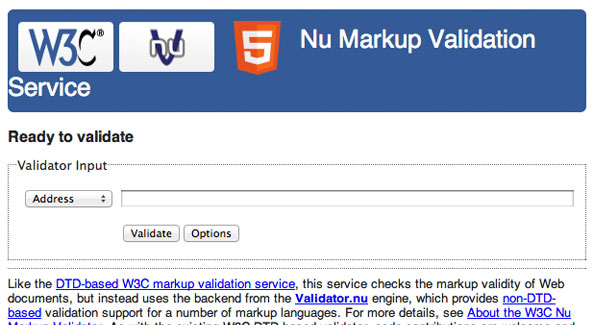
Validating a website is the process of ensuring that the pages on the website conform to the norms or standards defined by various organizations. Validation is important because it ensures that your web pages are interpreted consistently by various machines, such as search engines, as well as users and visitors to your webpage. In this long-form article, we will delve into the importance of website validation, particularly for WordPress websites, and provide a comprehensive guide on how to validate your site effectively.
Why Validate a Website?
Understanding Validation

Validation of a web page means making the page’s code compliant with the World Wide Web Consortium’s (W3C) standards. This is usually done by checking the HTML & CSS output of your web pages with a validation tool. Just like there are grammar rules in different languages, there are rules in computer programming too. Validation checks your web page to see if it follows those rules.
The Importance of Validation
Validation ensures that your web pages are interpreted the way you intend by search engines and browsers. It guarantees a consistent user experience across different platforms and devices. More importantly, validation can significantly impact your search engine marketing (SEO) efforts. Semantic, error-free code is easier for search engines to crawl and index, which can improve your search rankings.
Benefits of Validating Your WordPress Website
Better SEO
Never forget this fact: search engine spiders love semantic web pages. It helps those crawlers understand pages better, giving you a natural advantage in search engine results pages (SERPs) over pages that don’t validate. Validating your HTML and CSS code for standards compliance has certain benefits: it protects your pages from problems arising from syntax errors in your code due to different ways of interpreting errors by the search engines and other browsers.
Improved User Experience
Validating your website ensures that it looks and functions correctly across all browsers and devices. This consistency improves the overall user experience, reducing bounce rates and encouraging visitors to spend more time on your site. A site that works well on all devices also helps in retaining visitors, which can indirectly boost your SEO.
Easier Maintenance and Updates
A validated website is easier to maintain and update. Clean, well-structured code makes it simpler to troubleshoot issues, implement changes, and add new features. This efficiency saves time and resources in the long run.
Enhanced Professionalism
Validation shows that you care about your website and its users. It demonstrates a commitment to quality and professionalism, which can enhance your brand’s reputation and credibility.
How to Validate Your WordPress Website
Using Online Validation Tools
One of the simplest ways to validate your website is by using online validation tools. The W3C provides a Markup Validation Service that checks the HTML and XHTML of web documents. Similarly, the W3C CSS Validation Service validates the CSS of your web pages.
Steps to Validate Your Website:
- Visit the W3C Validator: Go to the W3C Markup Validation Service or the W3C CSS Validation Service.
- Enter Your URL: Input your website URL and click “Check”.
- Review Results: The tool will provide a report of any errors or warnings found in your code.
- Fix Issues: Correct the errors and revalidate until your page passes without issues.
Using Plugins
For WordPress users, several plugins can help with validation and maintaining clean code. Some popular ones include:
- WP HTML Compression: This plugin helps compress your HTML, making it cleaner and more efficient.
- Autoptimize: It optimizes your website’s code, including HTML, CSS, and JavaScript, which can help reduce validation errors.
- W3C Validator: A plugin that integrates the W3C validation service directly into your WordPress dashboard.
Manual Validation
Manual validation involves reviewing and correcting your code by hand. This method is more time-consuming but allows for greater control over your site’s code quality. It is especially useful for developers who want to ensure every detail is perfect.
Steps for Manual Validation:
- Code Review: Regularly review your site’s HTML and CSS code for errors.
- Browser Testing: Test your site across different browsers to ensure consistency.
- Accessibility Checks: Ensure your site meets accessibility standards (e.g., WCAG) to provide a better experience for all users.
Strategies to Avoid Webmaster Overload
If you have a large number of existing pages that have not been validated and corrected but nonetheless work well in search engines and other browsers, consider adopting a gradual validation strategy. Here’s how:
- Prioritize Critical Pages: Start by validating the most important pages, such as your homepage, landing pages, and high-traffic blog posts.
- Use a Phased Approach: Break down the validation process into manageable phases. Tackle a few pages each week rather than attempting to validate the entire site at once.
- Automate Where Possible: Use automation tools and plugins to assist with the validation process. These tools can help identify and fix common issues, saving time and effort.
- Continuous Monitoring: Make validation a regular part of your website maintenance routine. Regularly check for new errors and fix them promptly.
Validating your WordPress website is a crucial step in ensuring that it performs well in search engine marketing (SEO), provides a consistent user experience, and is easy to maintain and update. By using online tools, plugins, and manual validation methods, you can ensure that your site meets web standards and is free from code errors. Adopting a phased approach and prioritizing critical pages can help manage the validation process without overwhelming your resources. Ultimately, a validated website reflects your commitment to quality and professionalism, enhancing your brand’s credibility and effectiveness online.
